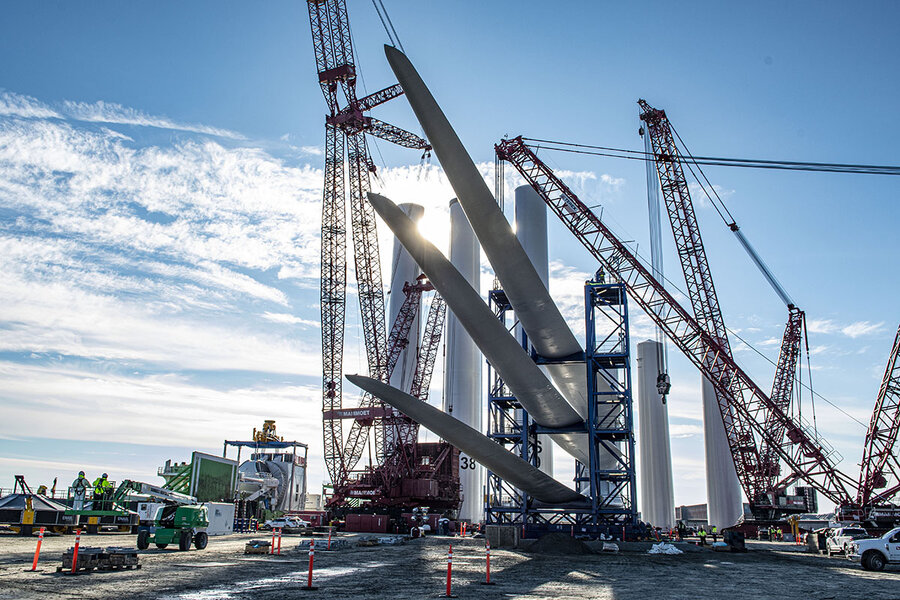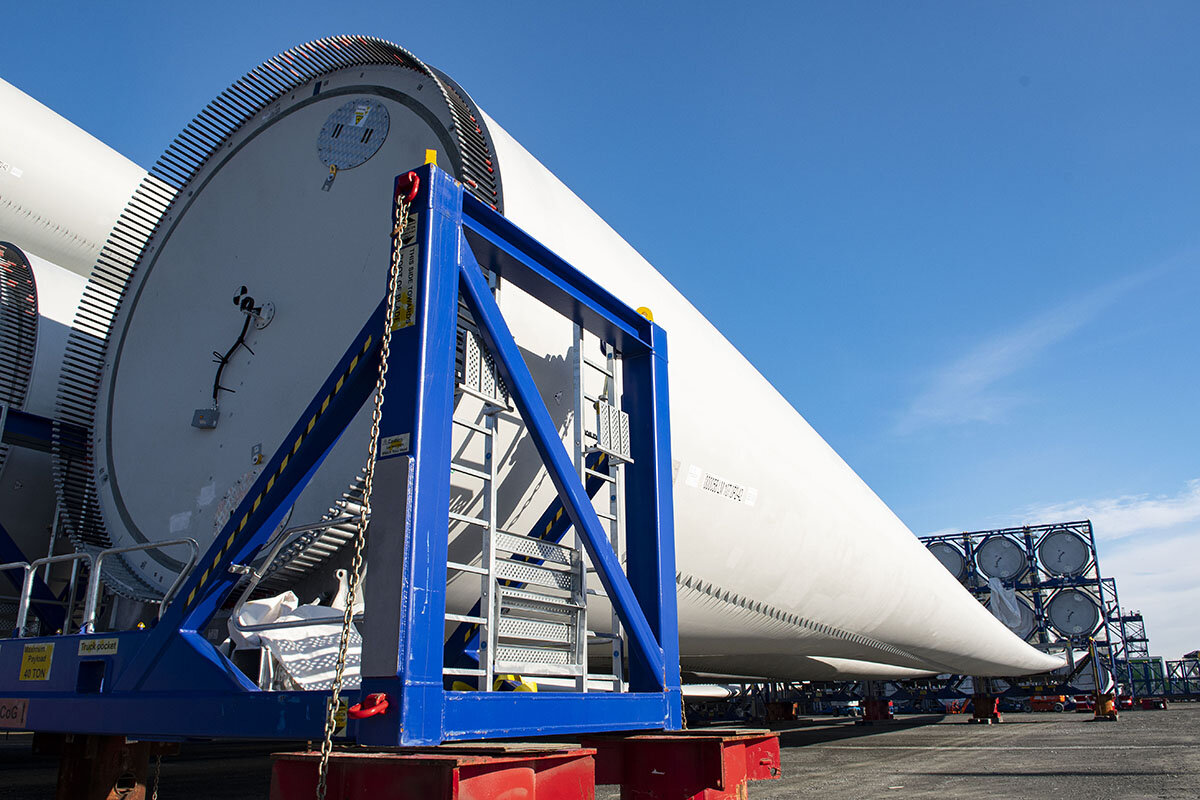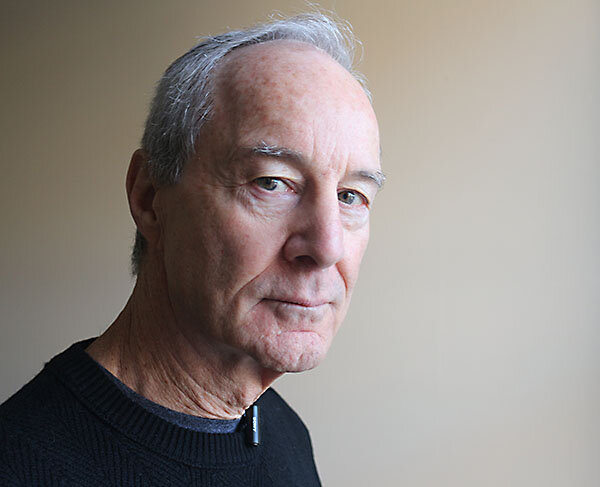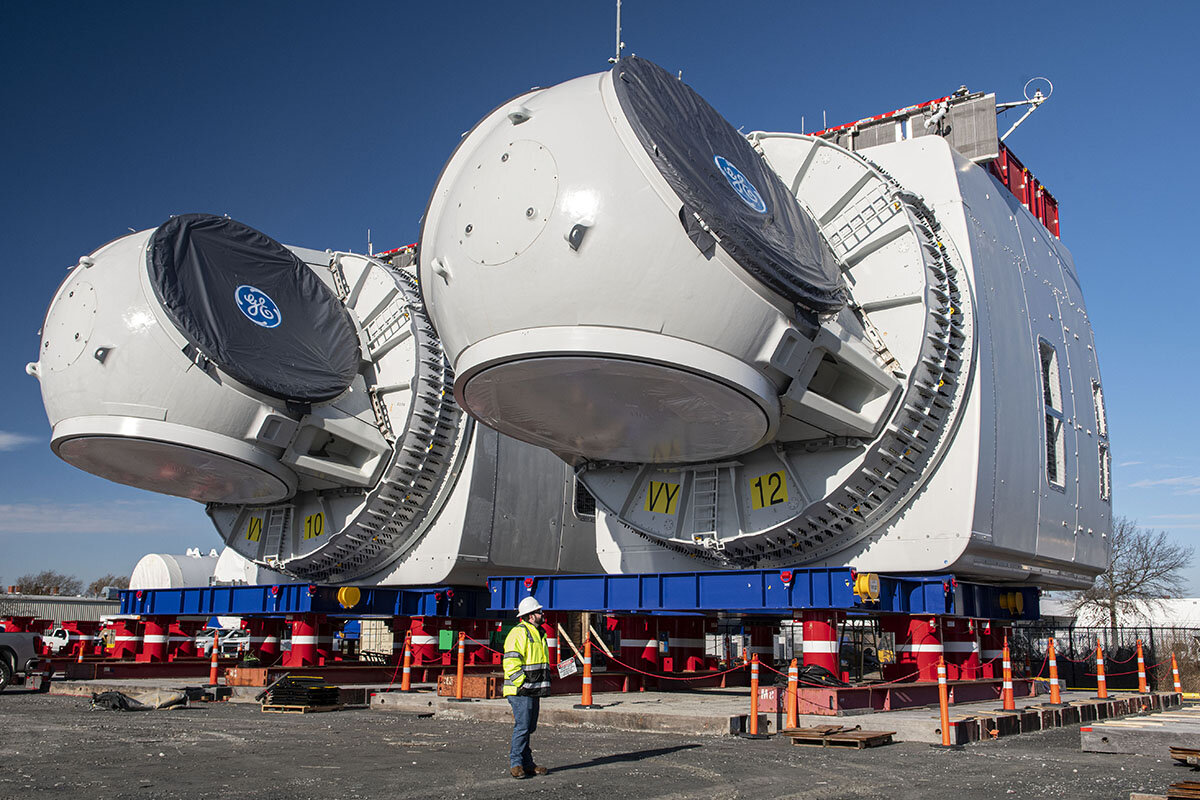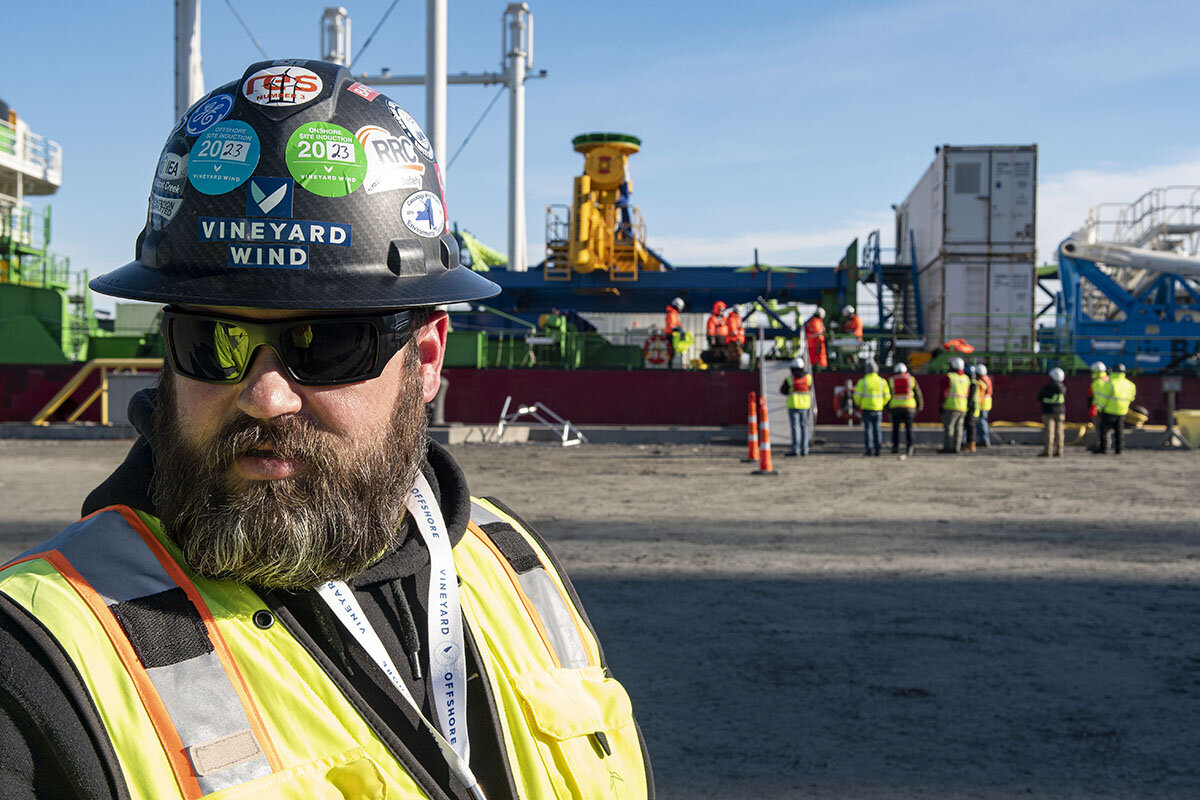Northeast wind projects notch a win, despite industry struggles
Loading...
| NEW BEDFORD, Mass.
The long slender blades, like the claws of a giant wolverine, are stacked in the port of New Bedford, ready to be barged out to sea and assembled onto turbines that believers say will help power America’s future.
At 11:52 p.m. on Jan. 2, the first of what will be 62 wind turbines in the Vineyard Wind project off Martha’s Vineyard, Massachusetts, began sending electricity ashore. This and South Fork Wind, a smaller project off Long Island, New York, that cranked up its first turbines Dec. 6, are the first commercial-scale offshore wind power farms to begin operations in the waters of the United States.
“I felt a lot of weight come off my shoulders,” says Klaus Møeller, the CEO of Vineyard Wind, who was monitoring the startup while in Copenhagen, Denmark, for the holidays. “We’ve had a ton of important steps, but when you do send electrons to the cable, that’s when you know the whole thing is working.”
Why We Wrote This
A story focused onThe first major offshore wind farms in U.S. waters have begun to generate power. It’s providing a sign of hope at a time of uncertainty for the industry.
When Mr. Møeller got the news, he ordered cake for all the Vineyard Wind offices – a company tradition. But he also says bluntly, “There’s a lot of work ahead.”
Indeed, the task before the offshore wind industry is daunting, and many companies are stumbling. President Joe Biden and many East Coast states are counting on a massive and hurried expansion of offshore wind power. But just as the first electricity begins flowing, major companies have canceled some projects and put others on hold.
South Fork’s milestone was overshadowed by the company’s decision to cancel plans for two other large wind farms off New Jersey. Other developers have pulled out of three projects in New England.
They say the costs of credit, parts, and construction have swollen so much that the projects would be money-losers under the contracts they made years ago while awaiting government approval. And the abrupt upsurge of demand for wind turbines after Russia cut off natural gas to Europe has left the supply cupboard bare.
“Developers have to go to manufacturers and say, ‘Can we please, please, please buy your turbines?’” says Mr. Møeller.
Jim Gordon knows the obstacles. Sitting in his Boston office 60 miles north of the New Bedford cranes that load turbine parts onto barges, Mr. Gordon ponders his dashed dreams of being the company with the first big U.S. wind farm. He spent 14 years fighting to create the Cape Wind project off Martha’s Vineyard. He spent more than $80 million and beat back, by his count, 26 court cases and regulatory challenges.
“We proposed the first U.S. offshore project in 2001, and now the first projects are finally coming to fruition,” he says of the Vineyard and South Fork projects. His offices are lined with photos of past and current energy projects, including his latest: Smartflower, a self-folding 16-foot-diameter solar dish that can stand on a lawn and track the sun to help power a home.
At the century’s turn, Mr. Gordon had proposed a $2 billion wind farm with 130 turbines between Cape Cod and Martha’s Vineyard. He faced a barrage of legal and regulatory challenges from powerful neighbors who did not want the turbines within their sight.
“We had a very sophisticated opposition group that knew all the tricks of the trade, and spent millions opposing us,” Gordon says. He won all legal fights, but the clock ran out on his contracts. “It was such a toxic mix of politics and NIMBY-ism and the fossil fuel interests.”
Mr. Gordon insists he is “delighted,” if a little envious, at the start of Vineyard and South Fork wind farms. “I hope there will be 500 more.”
The Biden administration agrees. President Biden has proposed that 80% of the country’s electricity be generated from renewable sources in seven years, and 100% by 2035. That massive scale-up is crucial for America to quit the fossil fuel addiction bringing more extreme floods, droughts, and heat waves to an alarmingly hotter world, his administration contends.
Few analysts think the timetable is achievable. The administration’s plan sets a goal of generating 30 gigawatts from offshore wind by 2030. That would require more than 2,000 turbines in the water. As of two months ago, there were seven. The Vineyard and South Fork projects will bring the total to 81.
“I’m confident that goal will not be met,” says engineering professor Christopher Niezrecki, director of the Center for Energy Innovation at the University of Massachusetts Lowell. He co-authored a recent report looking at the “daunting” wind power needs of his state.
He cites challenges beyond the higher costs cited by the companies: yearslong regulatory reviews, little U.S. manufacturing of components, needed overhauls of the nation’s electric grid, few available installation ships and docks, and shortages caused by the war in Ukraine. Atop all this comes opposition from powerful fossil fuel companies, which Dr. Niezrecki says are underwriting a “lot of misinformation in the news about the dangers of wind energy causing cancer or killing birds and things like that.”
But he also notes, “There’s a ton of offshore wind that’s being planned now. Are they going to come online? The answer is yes, they eventually will. The question is the timeline.”
“It’s very unfortunate that this confluence of factors has disrupted the momentum,” says Anne Reynolds, the incoming vice president of the American Clean Power Association, which lobbies for renewable energy. “But I do think in short order, we will regain the momentum and growth trajectory.”
Replacing fossil fuels in the U.S. will require all available sources, and they must be diversified, say analysts. No single renewable energy source will be a lone “winner.”
Giant turbines off the East Coast can pump huge amounts of power with great consistency to nearby communities, but they are expensive to build. Solar power can be generated at small scale on rooftops nearly anywhere, but it needs the sun and large amounts of space for big projects. Onshore wind turbines work well in the windy West, but they face opposition from potential neighbors and falter when the wind dies. Hydro, geothermal, and nuclear power have their merits but also limitations or risks.
“It’s kind of an all-of-the-above strategy if we’re to address the threat of climate change,” says Fred Zalcman, director of the New York Offshore Wind Alliance, a coalition of wind developers, environmentalists, and organized labor.
“If we could do it all with rooftop solar, then I’d say, ‘OK, let’s do that.’ But we can’t,” adds Ms. Reynolds. “There comes a point in the process where we say we need offshore wind to get there.”
Despite the recent concerns, some say investment in offshore wind could accelerate quickly based on the prospect of manageable costs and abundant jobs.
“South Fork Wind will power thousands of homes, create good-paying union jobs and demonstrate to all that offshore wind is a viable resource,” proclaimed New York Gov. Kathy Hochul, alongside other officials in East Hampton last month as the switch on that project was turned on.
The next day, Mr. Zalcman boarded a boat to see the South Fork turbines in the water. The hourslong trip was worth it, he says.
“I don’t know how to describe it other than, you know, just being an awesome sight,” he says. “Mammoth structures that are nearly the height of the Empire State Building, and the turbines turning ... the industry [is] actually starting to materialize.”




